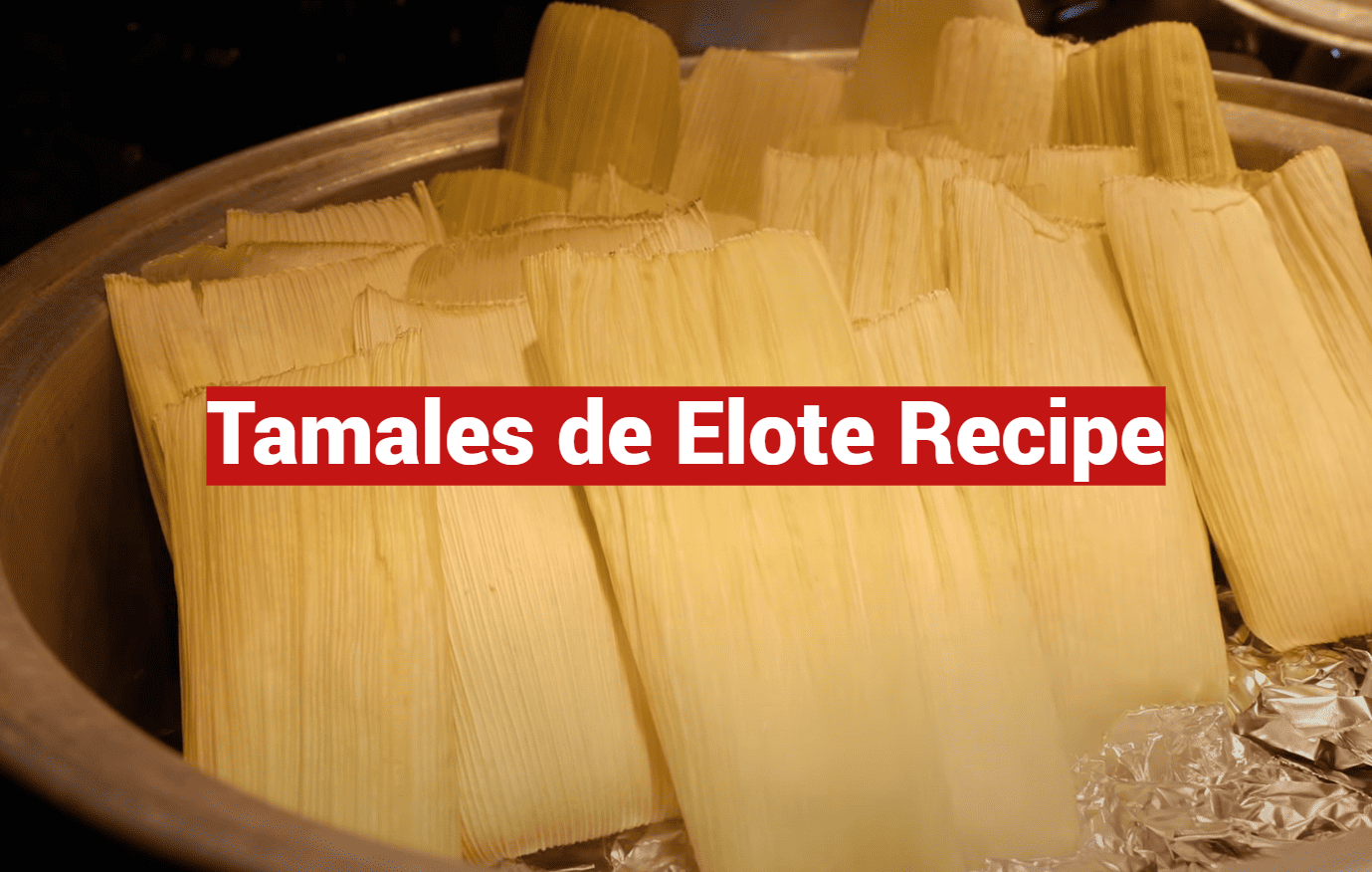Did you know traditional Mexican kitchens can transform fresh corn into a dessert-ready delicacy in under two hours? This vibrant dish combines simplicity with cultural heritage, requiring just nine accessible ingredients to create a crowd-pleasing treat perfect for holidays or casual gatherings.
Unlike complex meat-filled versions, these sweet corn tamales streamline preparation without sacrificing flavor. The recipe uses common pantry staples like masa harina and honey, making it ideal for first-time cooks. You’ll master techniques like spreading masa dough and wrapping corn husks—skills that unlock endless variations once learned.
Families across Mexico have shared this dessert for generations, often during festivals or family reunions. Today, its popularity spreads globally as home cooks seek authentic yet approachable international dishes. With minimal prep work and steaming time, you can serve warm, fragrant tamales that taste like they took all day.
Key Takeaways
- Requires only 9 common ingredients for authentic flavor
- Ready in 2 hours—faster than savory tamale varieties
- Perfect for celebrations or as a unique dessert option
- Uses simple wrapping and steaming techniques
- Customizable with mix-ins like cinnamon or dried fruit
Introduction to Sweet Corn Tamales
Mexican kitchens have perfected the art of turning humble ingredients into showstopping treats. Among these gems, sweet corn-based delicacies shine as a celebration of simplicity and heritage. These golden bundles swap savory fillings for nature’s candy—fresh corn kernels blended into a luscious dough.
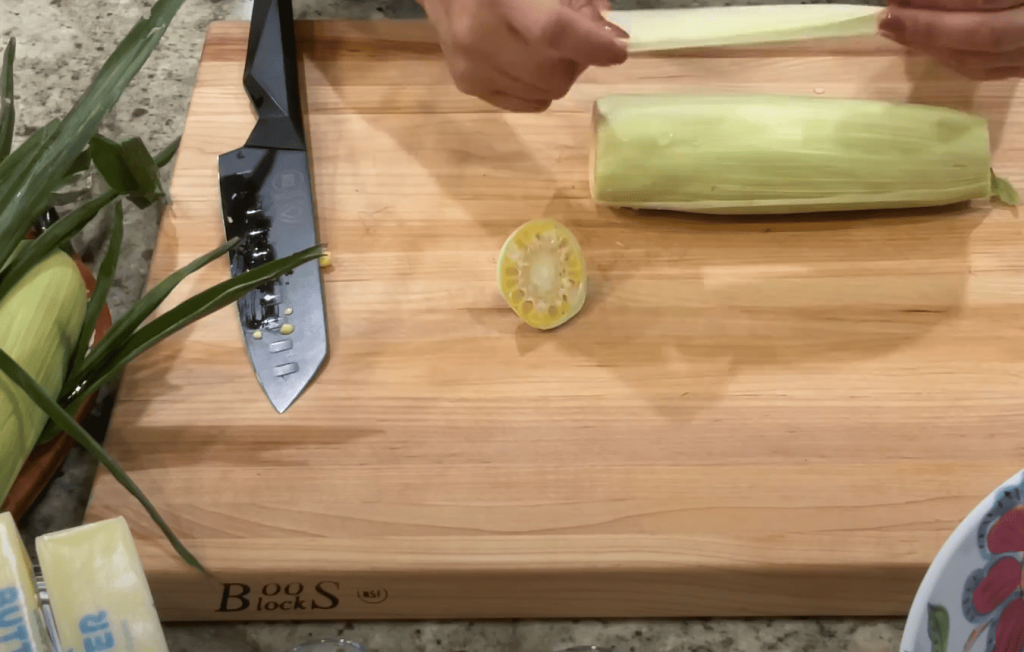
What Makes This Dessert Stand Out?
Corn isn’t just an ingredient here—it’s the main attraction. When blended fresh, it creates a custard-like texture that melts in your mouth. Regional recipes might skip masa harina entirely or mix in cornmeal for extra graininess, but all versions let the vegetable’s natural sugars lead the flavor dance.
Think cinnamon-dusted clouds wrapped in corn husks. Unlike their meat-filled cousins, these treats need no complicated sauces or spices. A touch of vanilla or honey enhances the corn’s sweetness without overpowering it.
Why Home Cooks Love This Recipe
First-timers appreciate the forgiving process. No wrestling with dense dough or intricate folding techniques here. The masa spreads easily, and steaming does the heavy lifting. You’ll get:
- A dessert that doubles as breakfast
- Customizable add-ins like raisins or chili powder
- Texture contrasts—crisp husk versus tender interior
Best of all? You can tweak the recipe using local corn varieties while keeping its authentic soul. It’s a edible passport to Mexico’s diverse culinary regions, no flight required.
The Rich Cultural Heritage Behind Mexican Tamales
Every bite of Mexico’s golden corn bundles tells a story older than modern borders. These steamed delights evolved from ancient Mesoamerican cooking methods, where communities wrapped masa in plant leaves for portable meals. Today, they symbolize both innovation and tradition across generations.
Origins and Regional Variations
In Michoacán, cooks craft Uchepos—a local version using tender kernels blended into masa. Sweetener choices reveal regional identities: northern areas often use condensed milk for richness, while coastal towns favor granulated sugar’s crisp sweetness. Even fats spark debate:
| Region | Preferred Fat | Flavor Profile |
|---|---|---|
| Central Mexico | Lard | Earthy, traditional |
| Modern Kitchens | Butter | Rich, creamy |
| Health-Conscious | Corn Oil | Light, neutral |
The Tradition of Family Cooking
Preparing these dishes turns kitchens into classrooms. Grandmothers teach grandchildren how to spread masa evenly, while siblings compete to fold husks fastest. “It’s not just food—it’s our history in your hands,” says María González, a Oaxacan home cook.
Festivals and holidays become opportunities for shared labor. Stories flow as easily as masa dough, preserving techniques that recipes alone can’t capture. This collective effort transforms simple ingredients into edible heirlooms.
Essential Ingredients for a Delicious Tamales de Elote
The secret to perfect sweet corn bundles lies in nine simple components found in most kitchens. Each element plays a specific role in creating the dessert’s signature texture and flavor profile, proving great food doesn’t need complexity.
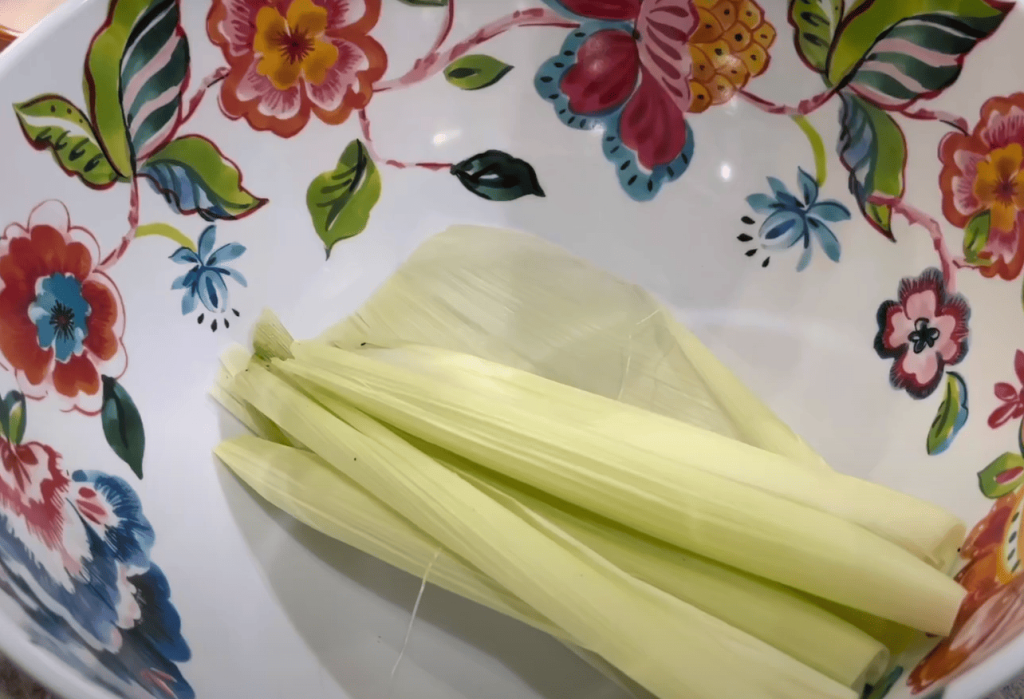
Masa, Corn, and Key Spices
Masa harina forms the recipe’s backbone, giving structure while maintaining that essential earthy taste. Canned sweet kernels bring natural moisture and brightness—think sunshine captured in golden grains.
Granulated sugar amplifies the corn’s sweetness without making it cloying. A dash of cinnamon adds warmth, while vanilla extract creates depth. Baking powder ensures lightness, transforming dense dough into cloud-like bites.
Corn Husks and Their Role in the Recipe
These natural wrappers do more than hold the dough. During steaming, they release subtle flavors and create ideal humidity levels. Look for pliable, unbroken husks at Latin markets or online retailers.
| Preparation Step | Purpose | Pro Tip |
|---|---|---|
| Soaking | Softens husks for folding | Use warm water for faster results |
| Rinsing | Removes debris | Check both sides carefully |
| Trimming | Creates uniform size | Save scraps for lining steamer |
Corn oil keeps the mixture tender, while salt balances the sweetness. Together, these ingredients create harmony in every bite—a testament to how thoughtful combinations elevate simple elements.
Preparing Corn Husks and Crafting the Masa
Great results begin with smart preparation. Mastering two critical steps—husk conditioning and corn blending—ensures your dough holds together beautifully during steaming. Let’s break down these fundamentals.
Soaking and Softening Techniques
Corn husks need hydration to become workable wrappers. Submerge them in hot water using a deep pot, weighing them down with a plate if needed. Cover with foil to retain heat, speeding up the process.
Check flexibility after 20 minutes by bending a corner. Older husks might need 60 minutes to soften fully. Drain and pat dry before filling to prevent soggy dough.
Blending Fresh and Canned Corn Options
Both fresh and canned kernels work here. Pulse in a blender until you get a grainy texture—think coarse sand with visible bits. Pro tip: Canned corn’s natural juices add moisture, reducing liquid needs.
Avoid over-blending. You want enough structure to support the masa without crumbling. Test consistency by pressing a spoonful—it should hold shape briefly before settling.
How to Make Tamales de Elote
Creating these golden corn bundles becomes second nature once you nail the assembly technique. Follow these straightforward steps to transform simple ingredients into tender, sweet delights that hold their shape beautifully.
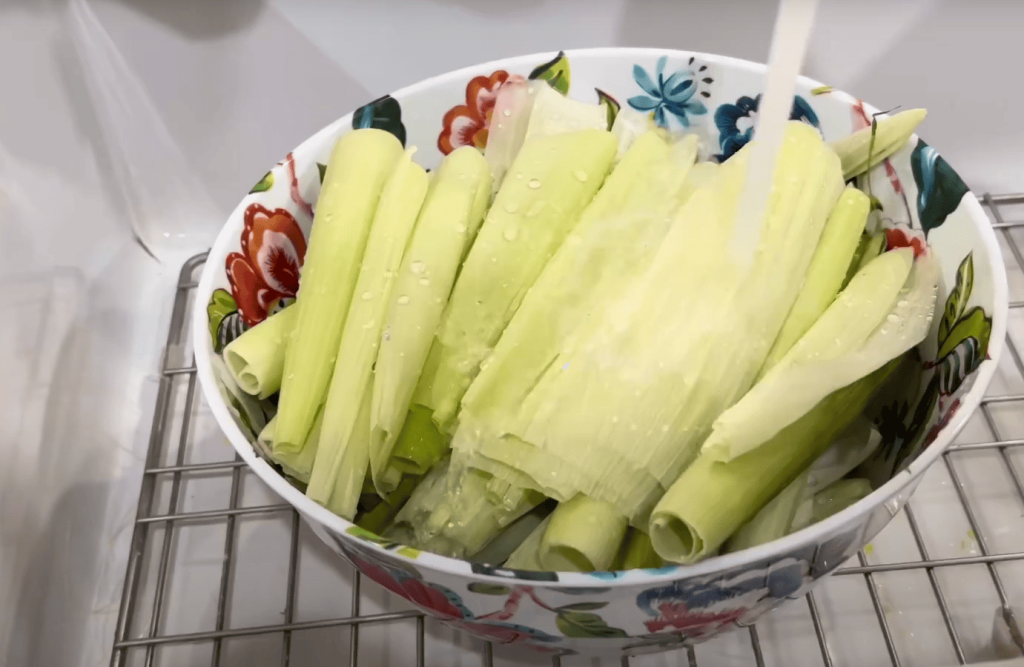
Step-by-Step Assembly and Folding
Combine masa harina with corn oil and dry ingredients until the mixture resembles wet sand. Gradually blend in fresh or canned corn until achieving a spreadable paste. Pro tip: Test consistency by pressing dough between your fingers—it should stick slightly without crumbling.
Place a heaping ¼ cup portion in the center of each softened husk. Fold long sides inward like closing a book, then tuck the pointed end upward. Leave one side open for steam circulation. This method prevents bursting while cooking.
| Common Mistake | Solution | Result |
|---|---|---|
| Overfilled husk | Use measuring cup | Even cooking |
| Loose folding | Press edges firmly | Tight seal |
| Dry husks | Soak 45 minutes | Flexible wraps |
Steaming for Perfect Texture
Arrange bundles upright in a steamer basket with open ends facing up. Fill the pot with 2 inches of water—maintain a steady simmer without boiling over. Steam covered for 75 minutes, checking water levels every 25 minutes.
After cooking, let rest 10 minutes. This cooling period helps the masa set properly. Gently peel back a husk to test doneness—the dough should separate cleanly from the wrapper.
Tips and Tricks for Recipe Success
Mastering this beloved dessert requires equal parts preparation and patience. Let’s explore solutions to common challenges that might arise during your cooking journey.
Common Troubleshooting Tips
Dough consistency makes or breaks the dish. Aim for a texture resembling thick peanut butter—it should cling to husks without dripping. If your mixture feels too loose, chill it for 30 minutes. This helps ingredients bind better.
Steaming time can surprise beginners. When the timer dings but the masa still feels sticky, turn off the heat. Let the pot sit covered for 15 extra minutes. Residual steam often finishes the job without overcooking.
Keep an eye on your water level. Refill with boiling water every 25 minutes to maintain steady heat. A rolling boil creates soggy results, while gentle bubbles yield tender perfection.
- Prep dough up to 3 days ahead—flavors deepen in the fridge
- Use fresh kernels for brighter sweetness (canned works too)
- Chill finished bundles if they’re too soft—2 hours firms them up
“Great masa needs rest, not rush. Let it breathe between steps.”
Husks tearing? Soak them longer in warm water. For extra insurance, overlap two smaller wrappers. This technique prevents leaks and maintains shape during steaming.
Creative Serving Ideas and Presentation
These golden corn bundles transform any meal into a celebration with their adaptable nature. Whether you’re hosting brunch or craving midnight snacks, their sweet-savory balance invites endless pairing possibilities.
Perfect Partners for Every Occasion
Start mornings with warm sweet corn treats beside spiced café de olla—the coffee’s caramel notes enhance the masa’s earthy sweetness. For dessert, dunk them in frothy Mexican hot chocolate dusted with cinnamon. Pro tip: A drizzle of honey amplifies their natural sugars without overpowering delicate flavors.
Create contrast with savory accents:
- Crumbled queso fresco adds salty tang
- Refried beans balance sweetness with richness
- Calabacitas (zucchini sauté) introduces fresh texture
“Leftovers become next-day magic when pan-fried crisp. Top with runny eggs—it’s breakfast reinvented.”
In the kitchen, experiment with melted butter brushed on husks before steaming for extra aroma. Serve on woven trays with fresh cilantro sprigs for authentic flair that delights eyes and taste buds alike.
Storage and Reheating Instructions for Best Results
Proper storage keeps your sweet corn creations tasting fresh. Follow these guidelines to maintain their texture and flavor from kitchen to table.
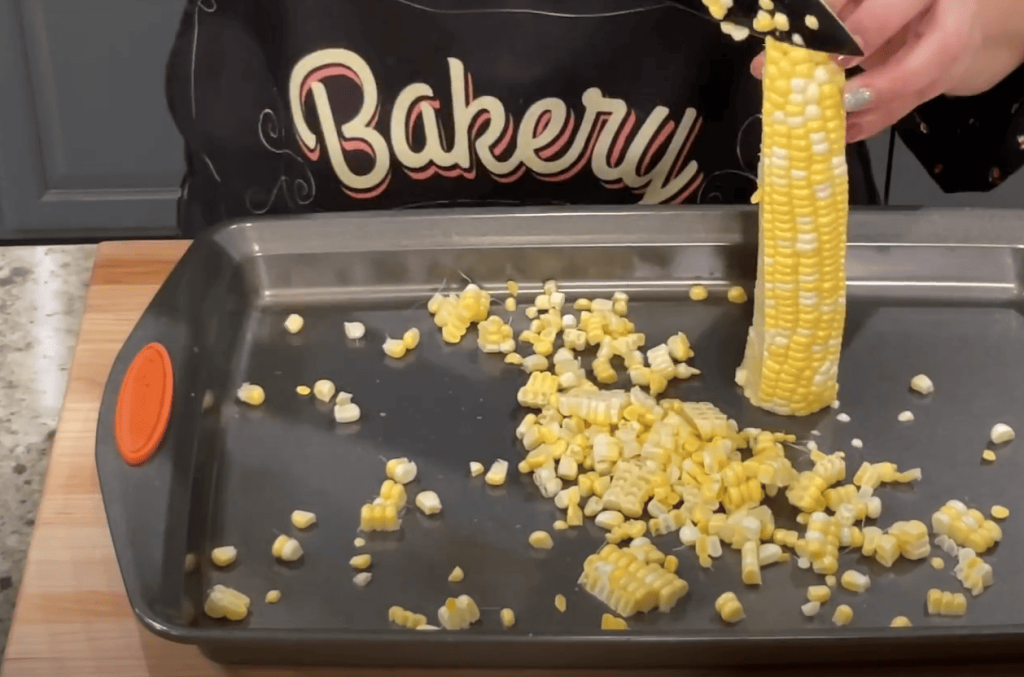
Keeping Treats Fresh Longer
Refrigerate leftovers within two hours of cooking. Place them in an airtight container, separating layers with parchment paper. They’ll stay fresh for up to five days.
For longer storage, freeze individual portions. Wrap each bundle tightly in plastic before sealing in freezer bags. Thaw overnight in the fridge for best results.
Reheating tip: Steam frozen bundles for 15 minutes or microwave wrapped in a damp paper towel. Avoid using the oven—it can dry out the delicate masa mixture.
Label containers with dates to track freshness. Glass jars prevent freezer burn better than plastic. Revive slightly dry dough by brushing husks with water before warming.

